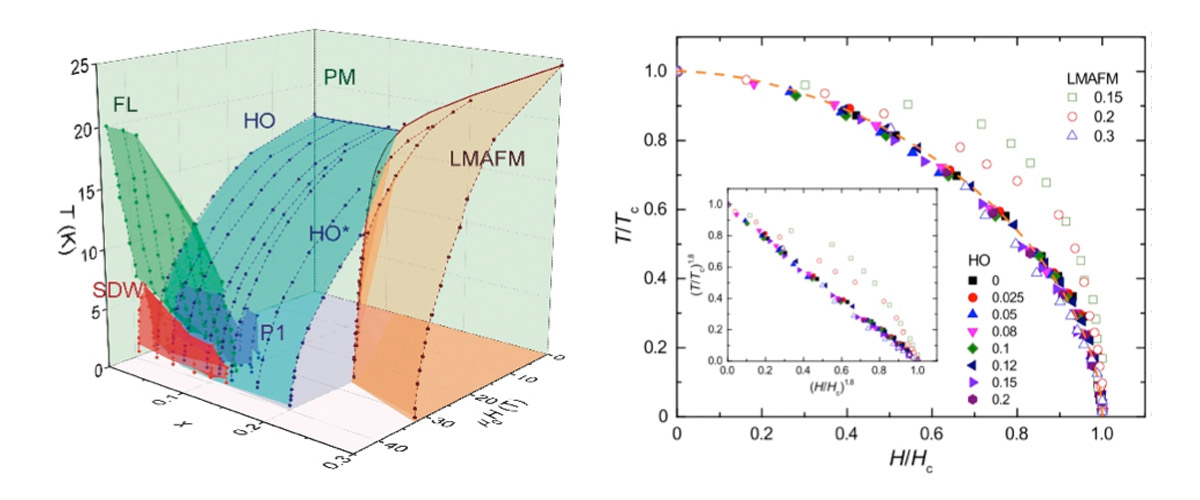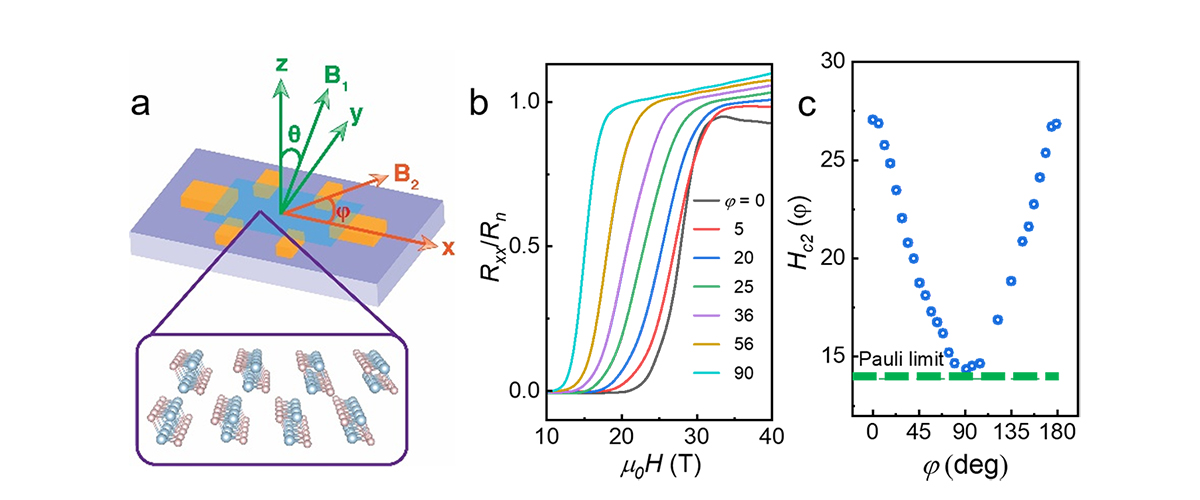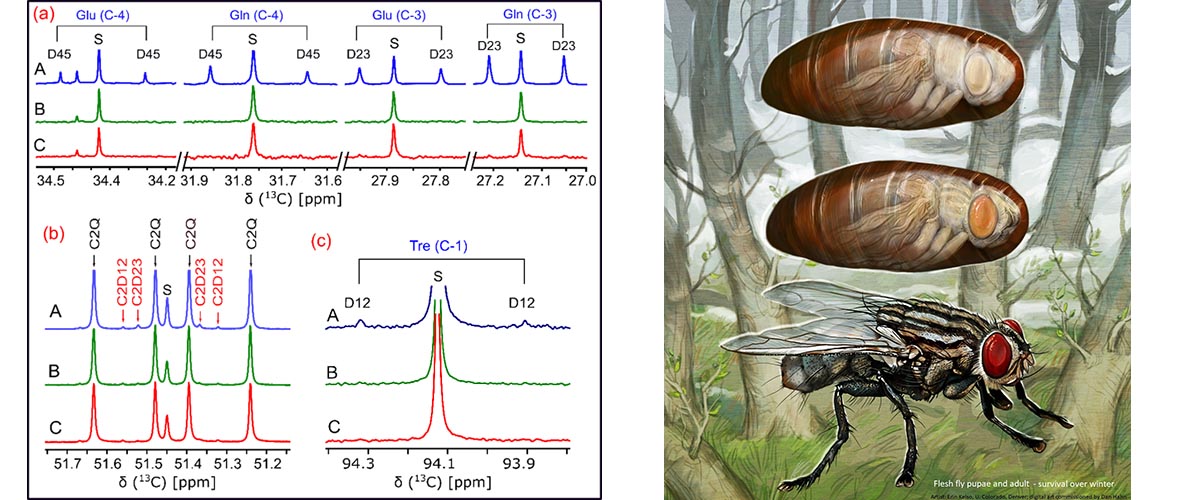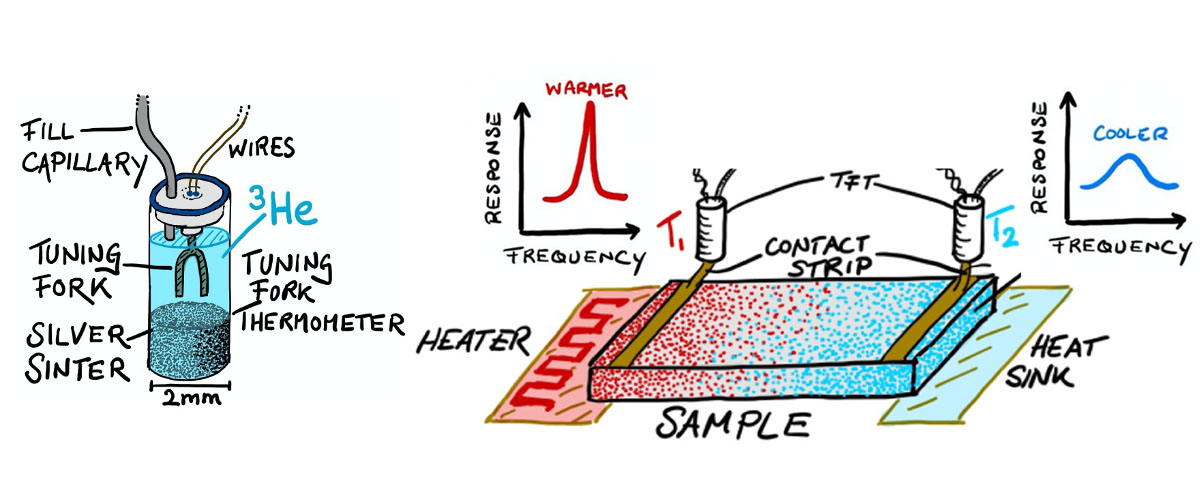What did scientists discover?
MagLab users measured the resistance of single crystals of URu2–xFexSi2 for various iron (Fe) concentrations, x, in very high magnetic fields. Changes in the electrical resistance allowed the boundaries between different phases of this material system to be mapped.
Why is this important?
In philosophy, systems theory, science and art, emergence occurs when the whole is greater than the sum of the parts, meaning the whole has properties that its parts do not possess. These properties come about because of interactions among the parts. Emergence plays an increasing role in theories of complex materials. The mysterious hidden order phase of URu2Si2 is a prime example of emergence, and this experiment allowed us to map out a three-dimensional (3D) field-temperature-composition phase diagram for the first time in this compound. This work established a single relation between the transition temperature and the critical magnetic field for the hidden order (HO) phase, which imposes constraints on any theories of the HO phase and its emergent behavior.
Who did the research?
Sheng Rana,b, Inho Jeonb,c, Naveen Pousea,b, Alexander J. Breindela,b, Noravee Kanchanavateea,b, Kevin Huangb,c, Andrew Gallagherd, Kuan-Wen Chend, David Grafd, Ryan E. Baumbachd, John Singletond, and M. Brian Maplea,b,c.
aPhysics, UCSD; bCenter for Advanced Nanoscience, UCSD; cMaterials Science and Engineering, UCSD; dNational MagLab
Why did they need the MagLab?
Very high magnetic fields and cryogenic temperatures are required to access the exotic phases that exhibit emergent behavior. Special instrumentation, unique to the MagLab, was used to make sufficiently precise resistance measurements.
Details for scientists
- View or download the expert-level Science Highlight, Phase diagram of URu2–xFexSi2 in high magnetic fields
- Read the full-length publication, Phase diagram of URu2–xFexSi2 in high magnetic fields, in PNAS
Funding
This research was funded by the following grants: A. Gallagher, K.-W. Chen, D. Graf, R.E. Baumbach, J. Singleton (NSF DMR-1157490); N.P. Wilson, X.Xu S. Ran, I. Jeon, N. Pouse, A.J. Breindel, N. Kanchanavatee, K. Huang, M.B. Maple (DOE DE-FG02-04ER46105 and DE-NA0002909, NSF DMR-1206553)
For more information, contact Marcelo Jaime.






